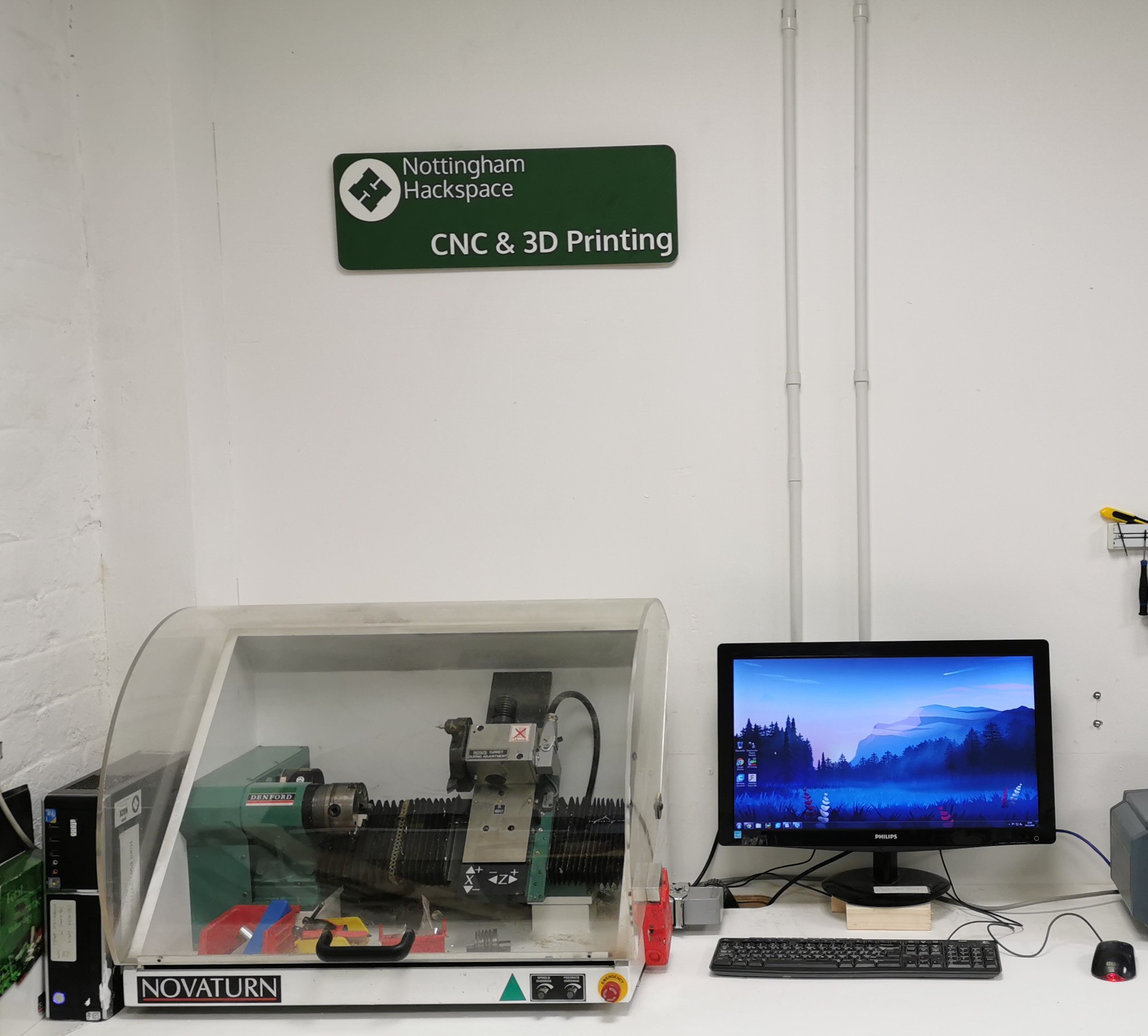Denford Lathe
Dclarke (talk) 08:56, 28 January 2014 (EST)
A benchtop Denford Novaturn CNC lathe
The novaturn lathe has been in the space for some time and has had very little use to date it is NOT a scary hard to use machine and is avaialble for use by any member without induction.
Obviously take care when using, if you are unsure of anything ASK SOMEONE, a a good place to ask is the google group. If you have never used a Lathe or CNC machine at all before the learning curve can be a little steep but should be manageable.
There are a number of good 'howto' videos on youtube See Part1 and Part 2
The lathe used is the same as ours except that we have a 8 position automatic tool changer.
The novaturn software has a simulation mode' that lets you program a part an run it on the computer only to check all is well before you actually cut it out for real. This gives an easy confidence boost.
Other reference: Novaturn Manual is available HERE
At the moment we have not set up any tool sets or fixed tool offsets so multi tool jobs and using the tool changer will probably need some deep learning or previous experience!. I am hope to do some work on this in the near future.
If you have any questions please ask, I am more than happy to give a demo/introduction if people do not feel confident enough to go it alone.
=========Below here be dragons==================================================
This stuff not needed to use the lathe, mostly collecting things as I find them in case we ever want to upgrade the Lathe to a better controller.
Auto Tool Changer. The ATC unit runs from a DC motor driving the tool turret via a worm Gear. There are 3 sensors (optical) that give a grey code encoded tool number as the turret rotates. The tool is selected by putting 24 volts on the DC motor, the turret starts turning. Monitor the 3 sensors, when they have the correct tool number the DC voltage is reduced to 12 volts and the polarity is reversed. This causes the toolpost to reverse and lock. The 12 volts reverse polarity is maintained to keep the tool locked in place. Diagrams of the tool changer board below.
